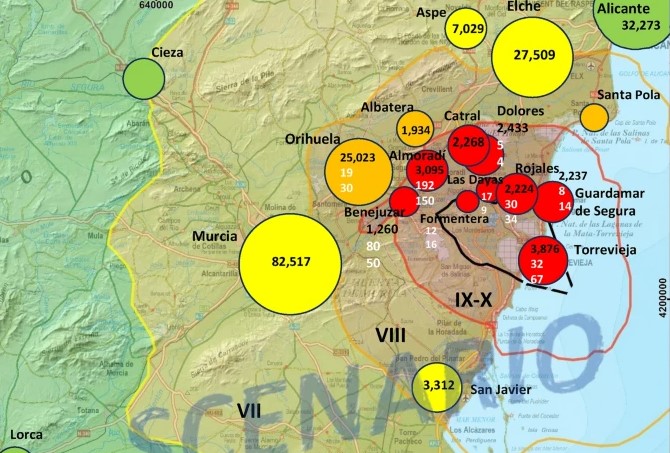Spain is a country of immense beauty, yet it also harbors geological risks that are often underestimated. A recent study by geologists now reveals the potentially devastating effects of a major earthquake on the Spanish Mediterranean coast. The results are a sobering reminder of the need for better preparedness and awareness.
Historical Quakes as a Warning for the Future
Spain’s history has already witnessed the immense forces of nature. In 1829, a severe earthquake shook Torrevieja, and in 1884, another struck Arenas del Rey. These historical events tragically claimed 389 and 900 lives respectively, serving as a stark reminder of the seismic hazard in the region. The current study analyzes how such an earthquake would affect these areas today, given the massive tourist development.
Spain’s Coast: Insufficiently Prepared for an Earthquake?
“Spanish society is not prepared for this type of high-intensity event, which has occurred in the recent past and will certainly occur again in the future,” emphasize the researchers in their study recently published in the journal Natural Hazards. The estimates they have made are “disheartening.” Particularly in Torrevieja, one of the most prominent tourist enclaves on the Spanish Mediterranean coast, the population has grown exponentially since the 19th century, significantly increasing the risk in the event of an earthquake.
To conduct their calculations, the scientists used the PAGER system (Prompt Assessment of Global Earthquakes for Response) from the United States Geological Survey (USGS). This system allowed them to estimate the potential impact of the historical earthquakes of Torrevieja and Arenas del Rey on today’s population density and during the tourist season.
Horrific Casualties and Massive Economic Damage Expected
The forecasts for a hypothetical earthquake in Torrevieja are alarming. Conservative models indicate economic losses of almost one-tenth of Spain’s GDP and thousands of casualties. These would be “severe losses never before recorded in Spain.” Specifically, the average death toll could be around 5,700 people. The probability of economic losses reaching about 10% of Spain’s GDP is stated as 55%.
Although the figures for Arenas del Rey are comparatively lower – due to rural exodus in the 20th century – the effects would nevertheless be “equally catastrophic,” according to the researchers. Millions in losses and thousands of casualties are also expected here.
Prevention as Key to Disaster Mitigation
Both scenarios could “certainly occur in similar areas in the future,” leading to devastating situations “if territorial, urban, and tourism policies are not improved,” the experts warn. This news underscores the urgent need to strengthen preventive measures and optimize disaster preparedness in vulnerable regions of Spain. Only through proactive action can a repeat of past tragedies be prevented and the safety of the population and tourists on the Mediterranean coast be ensured.




